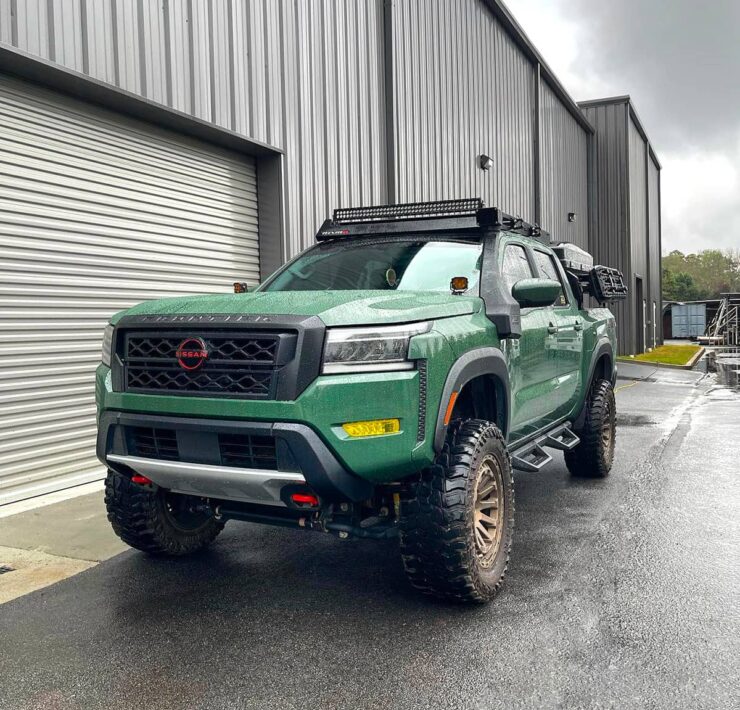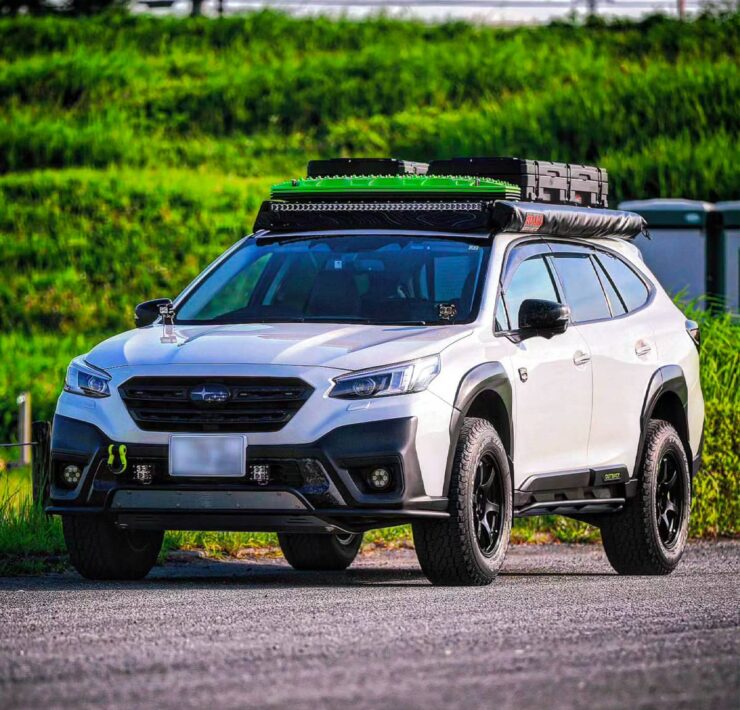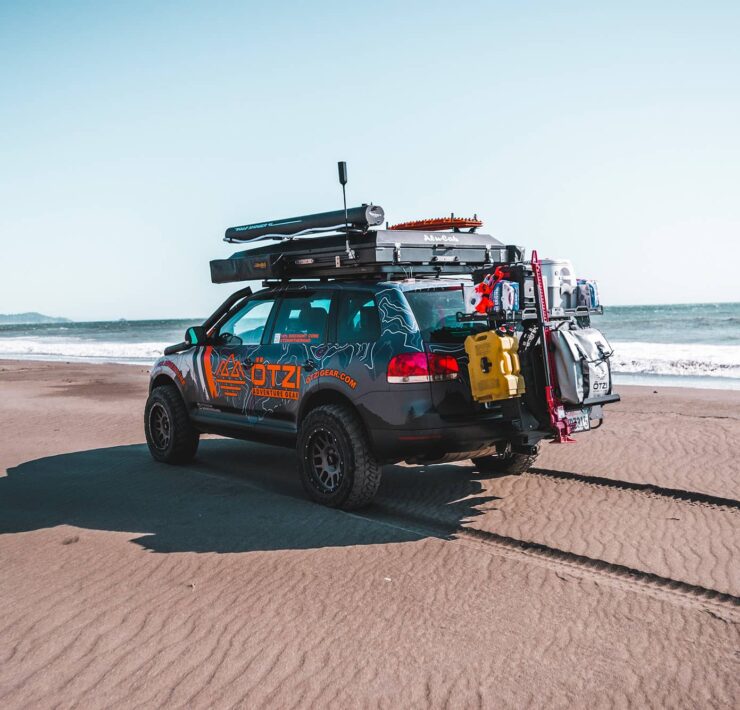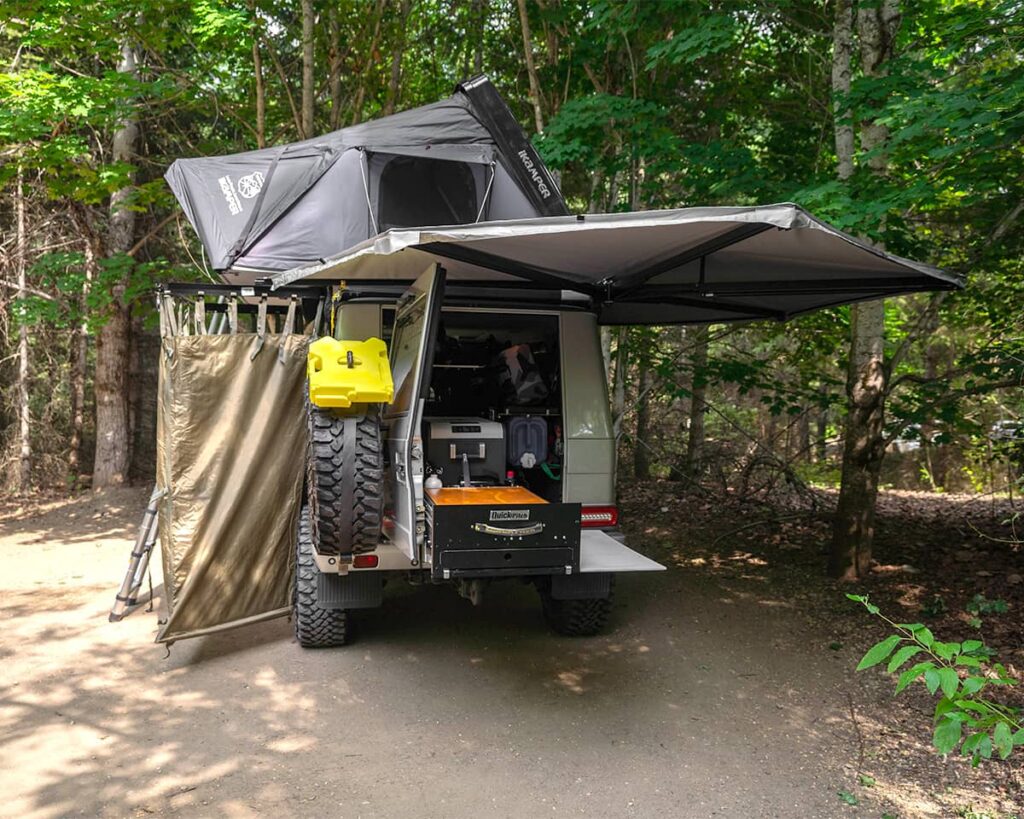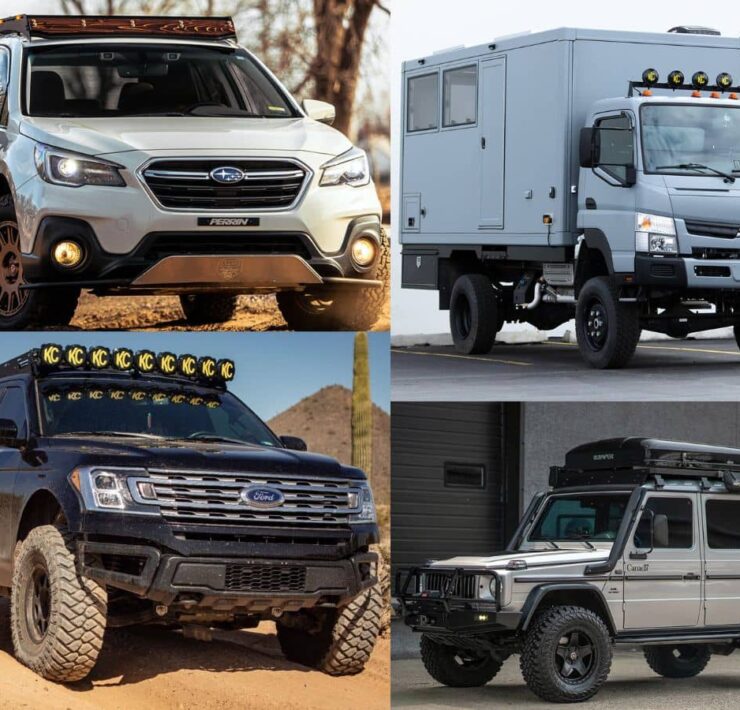
Overland Builds
Overlanding is hands down one of the biggest trends in the off-road community, which emerged in pre-Covid years and has evolved into a large following. That’s why we keep seeing more and more awesome dedicated overland rigs appearing all over the country.
On this page, we’ve gathered some of the most interesting and influential overland builds for multi-day off-road adventures into the wilderness. In our features, you will find interviews with the owners and builders as well as detailed information about the parts and upgrades installed on these vehicles.
FORD
JEEP
NISSAN
RAM
TOYOTA
OTHER MAKES
Difference between Overland Builds and Off-road Builds
While there is a blurry line between overlanding and off-roading, it’s fair to say that overlanding adds the element of camping and living off-grid on top of the traditional concept of off-roading. While the primary goal of off-roading typically involves overcoming extreme obstacles and testing the limits of a vehicle’s 4×4 capabilities, the goal of overlanding is the trip or expedition itself, which MAY involve overcoming obstacles if necessary.
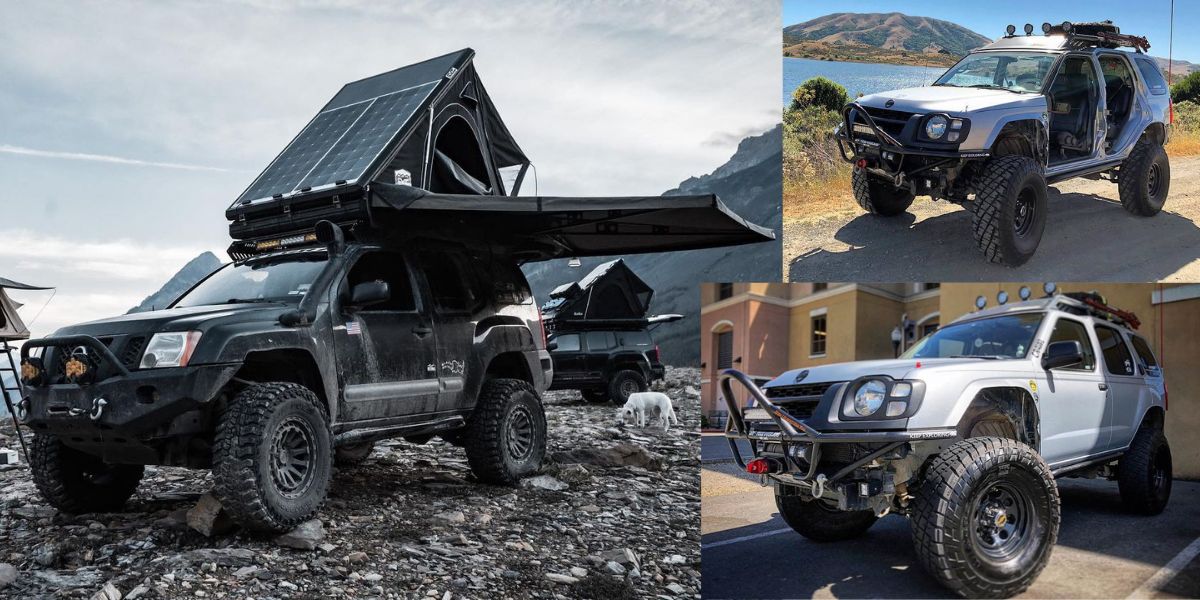
Since the goals of these similar yet distinctive activities are quite different, so are the approaches to choosing and building vehicles accordingly. A short-base 2-door 4×4 like a Suzuki Samurai would hardly be an optimal choice for a week-long overlanding expedition, since it’s simply not as comfortable or spacious enough to haul all the gear as rigs like a Land Cruiser or a Ford Ranger.
Key priorities of any overland vehicle project are 4×4 capabilities, reliability, payload capacity, on and off-road comfort, and interior space. Modern full-size SUVs and trucks happen to match these criteria better than any other vehicle types, which is why they are often selected for overland projects.
What Makes a Good Overland Build
4×4 Capabilities
As with any off-road project, overcoming obstacles on the trails is one of the key priorities, so it’s very important to start with a good base in the first place. A good candidate will have optimal approach/departure angles, sufficient ground clearance, large wheels, and a chassis less prone to damage (ideally body-on-frame).
For instance, modifying a non-off-road dedicated AWD crossover would only make it come close to a stock 4WD SUV such as a Toyota Land Cruiser. Load it up with the gear you’ll likely need during your trip, and you’ll soon face the need to make compromises.
Space and Payload
While a compact SUV or truck may be enough for solo trips, adventures with your family and friends will require more cargo and gear to be taken on board, especially for comfortable living off the grid. That’s why space and payload are vitally important for your overland project.
Performance
A vehicle equipped with body armor, oversized tires, and loaded up with gear becomes heavy due to all the added weight, which puts additional stress on the engine, transmission, and drivetrain. An ideal candidate for your overland build must be prepared to handle all that without bogging down under its own weight.
Comfort
Even though we all perceive it differently, comfort behind the wheel plays a major role in any overland trip. Off-road miles can be grueling and put a real toll on your energy resources by the end of the day. A comfortable seat, absence of annoying wind or engine noises, cool air from the A/C, and conveniently organized sleeping or kitchen areas will make a big difference in the way you experience a trip.
After driving Jeeps for years, I went on a long road trip with some friends on a Land Cruiser. That’s all it took to make a switch. A Land Cruiser is a very capable rig on any obstacles from Moab to sand dunes to high mountain passes Colorado, but the main thing was all the road travel between destinations. – Alex, WestOverland
Based on all the factors highlighted above, it becomes evident that an ideal candidate for your overland build is a mid or full-size body-on-frame truck, SUV, or even a van equipped with a capable 4×4 drivetrain as well as a reliable engine. The vehicles featured in this section of our site prove this in the best way.






